Alex Butler: Street,
Co Westmeath
There have been very few chances to get the combine out in Westmeath, with showers on Friday night and Saturday stopping action.
Alex finished cutting winter barley at the beginning of last week. While the best crop yielded 4.2t/ac, the worst field did 3t/ac.
The majority came in at between 3.5 and 3.8t/ac. These yields are slightly below average for Alex. The moisture content was also quite high at between 19 and 27%.
Alex says he weighed up the options and decided it was better to harvest at higher moistures than to wait for moistures to fall but allowing losses to rise.
Losses
Some of the barley was badly broken down and losses were a minimum of 5% across the board. Thicker crops were able to hold themselves up, but thinner crops had more heads near to the ground. Alex says there were less losses in 6-row varieties.
No straw has been baled yet. Only 110ac of wheat and barley straw is being baled this year, with the remainder being chopped. Winter oats were then tackled after the barley.
It was harvested at 19% moisture and yielded 3.5t/ac, with the best of it at 3.8t/ac. Alex notes that bare patches from the wet autumn negatively influenced the average yield.
Some oilseed rape has also been cut. Yields are coming in at between 1.8 and 2t/ac at 8.5 to 15% moisture. Alex hopes to finish the oilseed rape this week, after which the winter wheat will be nearly ready to harvest.
Some early-planted spring barley will probably also be ripe, while the rest of the barley and organic spring oats will be ready by the time the wheat and early-planted barley are cut.
The sprayer has also been out this week. The spring oilseed rape received its final fungicide at petal fall. The maize looks ok, but could do with more sunshine.
Patrick Kehoe: Bunclody,
Co Wexford
Harvest preparations are in full flow for Patrick in Wexford.

Spring beans are showing good potential on Patrick’s farm.
The combine is being serviced and new brakes have been put on a grain trailer. Patrick thinks his harvest won’t begin for another two or three weeks, around 15 August. He hopes the weather will have improved by then, as he will have most of his crops coming in at nearly the same time.
While it won’t be breaking any records, the spring barley looks good. There is some secondary regrowth on lighter banks and shallow soils.
This could cause issues with uniformity of ripening. There is also a small bit of lodged barley, but nothing too worrying.
Patrick thinks this is because the crop took up nitrogen from the soil after the dry spell in June, leading to a growth spurt.
The gluten-free spring oats look quite good. There is only a small bit of secondary regrowth in the oats.
The crop is standing very well so far, and the two growth regulators applied have worked very well. Patrick notes that the secondary regrowth is taller than the rest of the crop.
Patrick will only be baling enough barley straw for his own needs and a couple of relatives.
The remaining barley straw and oaten straw will be chopped and incorporated under the Straw Incorporation Measure. This will also allow Patrick to get in quickly with cover crops after harvest.
The crop is standing very well so far, and the two growth regulators applied have worked very well
The spring beans are beginning to senesce. There are a good number of pods on the stems and a good plant stand. They have remained clean and are not ripening in too quickly. Patrick expects that they will be harvested in early September.
Away from the tillage side of the farm, Patrick has cut some silage. He has also been weighing lambs before bringing them to the mart and herd-testing the cattle.
Kevin O’Gorman: Castledermot,
Co Kildare
The harvest has been a struggle so far in Kildare, but Kevin says that ground conditions are holding up well, considering there was a record 135mm of rain in July in the area.
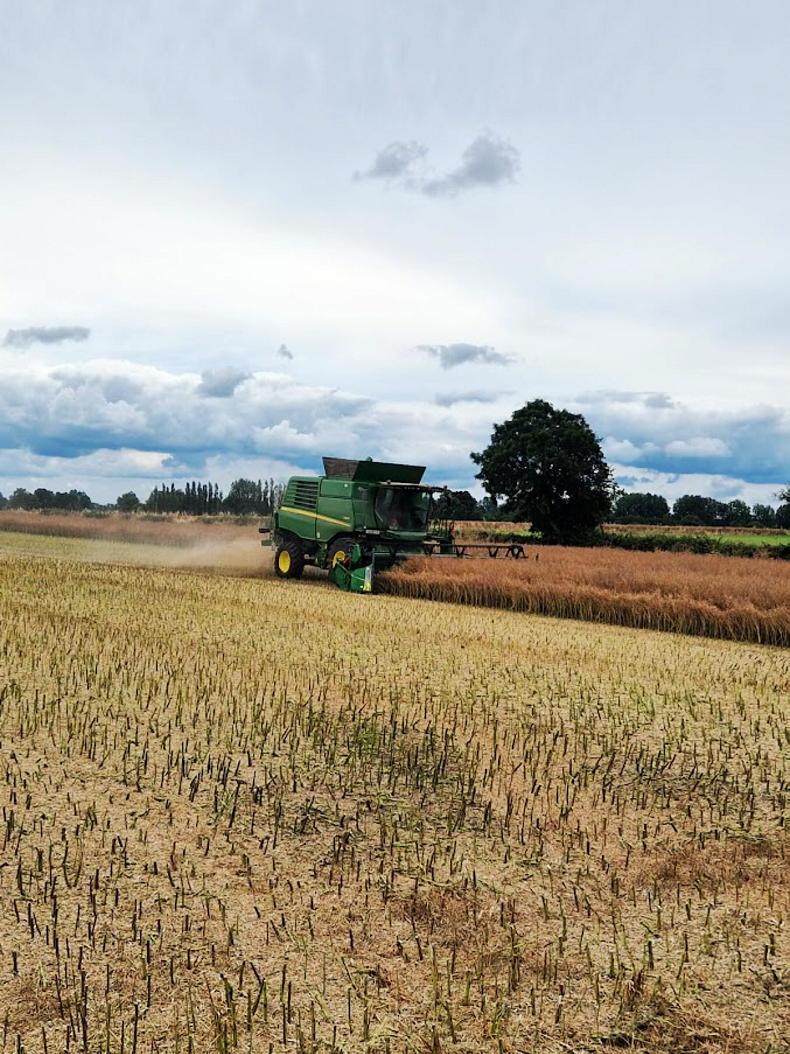
The O'Gormans were busy harvesting winter oilseed rape last week.
The O’Gorman brothers had their earliest ever start to the harvest this year on 2 July, and finished the winter barley on 20 July.
Yields were disappointing, ranging from 2.6 to 3.6t/ac, averaging 3.2t/ac at 16 to 18% moisture. The variety was Belfry, and while in the past it has typically yielded 3.7 to 4.2t/ac, Kevin says that 2-row varieties have done much better locally this year. He might try a 2-row variety this autumn.
The fields of winter barley looked excellent in May, but the drought in June led to poor grain fill. Only one-third of the straw has been baled so far, with the remainder to be completed when there are a few good drying days together.
Winter oats were harvested on 24 July. Thundery rain showers caused widespread lodging in the crop roughly two weeks before harvest.
This has not affected quality, and the oats yielded 3.6t/ac at 17% moisture. The straw was chopped and the stubbles were cultivated this week.
The O’Gormans then moved to winter oilseed rape, which averaged 1.8t/ac at 10 to 12% moisture.
The winter wheat and spring barley are now ripe and will be cut when the weather allows.
The straw was chopped and the stubbles were cultivated this week
Good weather would be very welcome, as the bulk of the harvest is winter wheat on the farm. However, one crop the rain has been beneficial for is potatoes.
It came at the right time for scab control, but more sun and heat is now required to increase tuber size and yield.
Spraying continues to be challenging, but no blight has been seen so far. Spraying is carried out every seven to 10 days, and Cymbal is added when these timings become stretched in the poor weather.
Alex Butler: Street,
Co Westmeath
There have been very few chances to get the combine out in Westmeath, with showers on Friday night and Saturday stopping action.
Alex finished cutting winter barley at the beginning of last week. While the best crop yielded 4.2t/ac, the worst field did 3t/ac.
The majority came in at between 3.5 and 3.8t/ac. These yields are slightly below average for Alex. The moisture content was also quite high at between 19 and 27%.
Alex says he weighed up the options and decided it was better to harvest at higher moistures than to wait for moistures to fall but allowing losses to rise.
Losses
Some of the barley was badly broken down and losses were a minimum of 5% across the board. Thicker crops were able to hold themselves up, but thinner crops had more heads near to the ground. Alex says there were less losses in 6-row varieties.
No straw has been baled yet. Only 110ac of wheat and barley straw is being baled this year, with the remainder being chopped. Winter oats were then tackled after the barley.
It was harvested at 19% moisture and yielded 3.5t/ac, with the best of it at 3.8t/ac. Alex notes that bare patches from the wet autumn negatively influenced the average yield.
Some oilseed rape has also been cut. Yields are coming in at between 1.8 and 2t/ac at 8.5 to 15% moisture. Alex hopes to finish the oilseed rape this week, after which the winter wheat will be nearly ready to harvest.
Some early-planted spring barley will probably also be ripe, while the rest of the barley and organic spring oats will be ready by the time the wheat and early-planted barley are cut.
The sprayer has also been out this week. The spring oilseed rape received its final fungicide at petal fall. The maize looks ok, but could do with more sunshine.
Patrick Kehoe: Bunclody,
Co Wexford
Harvest preparations are in full flow for Patrick in Wexford.

Spring beans are showing good potential on Patrick’s farm.
The combine is being serviced and new brakes have been put on a grain trailer. Patrick thinks his harvest won’t begin for another two or three weeks, around 15 August. He hopes the weather will have improved by then, as he will have most of his crops coming in at nearly the same time.
While it won’t be breaking any records, the spring barley looks good. There is some secondary regrowth on lighter banks and shallow soils.
This could cause issues with uniformity of ripening. There is also a small bit of lodged barley, but nothing too worrying.
Patrick thinks this is because the crop took up nitrogen from the soil after the dry spell in June, leading to a growth spurt.
The gluten-free spring oats look quite good. There is only a small bit of secondary regrowth in the oats.
The crop is standing very well so far, and the two growth regulators applied have worked very well. Patrick notes that the secondary regrowth is taller than the rest of the crop.
Patrick will only be baling enough barley straw for his own needs and a couple of relatives.
The remaining barley straw and oaten straw will be chopped and incorporated under the Straw Incorporation Measure. This will also allow Patrick to get in quickly with cover crops after harvest.
The crop is standing very well so far, and the two growth regulators applied have worked very well
The spring beans are beginning to senesce. There are a good number of pods on the stems and a good plant stand. They have remained clean and are not ripening in too quickly. Patrick expects that they will be harvested in early September.
Away from the tillage side of the farm, Patrick has cut some silage. He has also been weighing lambs before bringing them to the mart and herd-testing the cattle.
Kevin O’Gorman: Castledermot,
Co Kildare
The harvest has been a struggle so far in Kildare, but Kevin says that ground conditions are holding up well, considering there was a record 135mm of rain in July in the area.

The O'Gormans were busy harvesting winter oilseed rape last week.
The O’Gorman brothers had their earliest ever start to the harvest this year on 2 July, and finished the winter barley on 20 July.
Yields were disappointing, ranging from 2.6 to 3.6t/ac, averaging 3.2t/ac at 16 to 18% moisture. The variety was Belfry, and while in the past it has typically yielded 3.7 to 4.2t/ac, Kevin says that 2-row varieties have done much better locally this year. He might try a 2-row variety this autumn.
The fields of winter barley looked excellent in May, but the drought in June led to poor grain fill. Only one-third of the straw has been baled so far, with the remainder to be completed when there are a few good drying days together.
Winter oats were harvested on 24 July. Thundery rain showers caused widespread lodging in the crop roughly two weeks before harvest.
This has not affected quality, and the oats yielded 3.6t/ac at 17% moisture. The straw was chopped and the stubbles were cultivated this week.
The O’Gormans then moved to winter oilseed rape, which averaged 1.8t/ac at 10 to 12% moisture.
The winter wheat and spring barley are now ripe and will be cut when the weather allows.
The straw was chopped and the stubbles were cultivated this week
Good weather would be very welcome, as the bulk of the harvest is winter wheat on the farm. However, one crop the rain has been beneficial for is potatoes.
It came at the right time for scab control, but more sun and heat is now required to increase tuber size and yield.
Spraying continues to be challenging, but no blight has been seen so far. Spraying is carried out every seven to 10 days, and Cymbal is added when these timings become stretched in the poor weather.






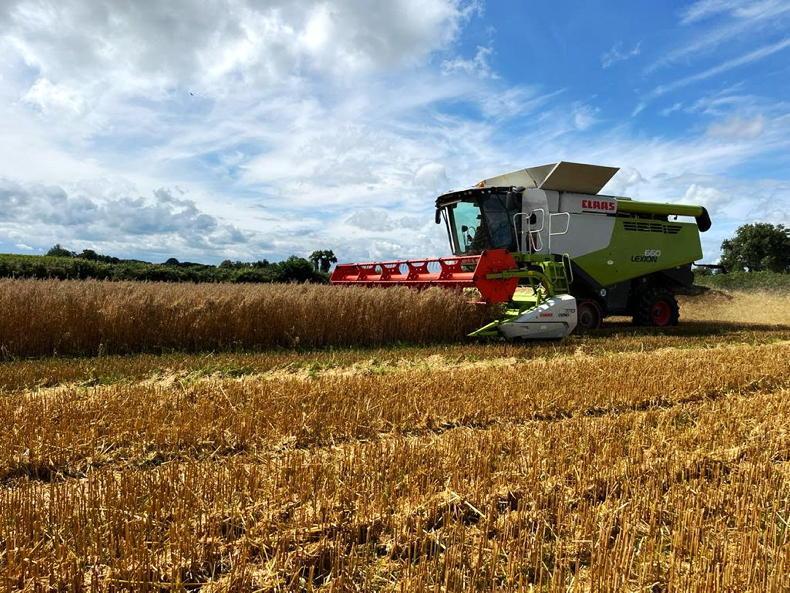
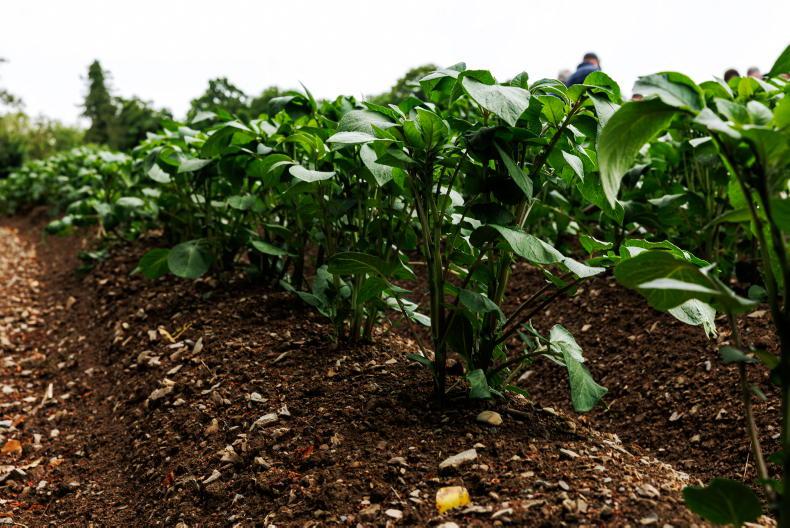

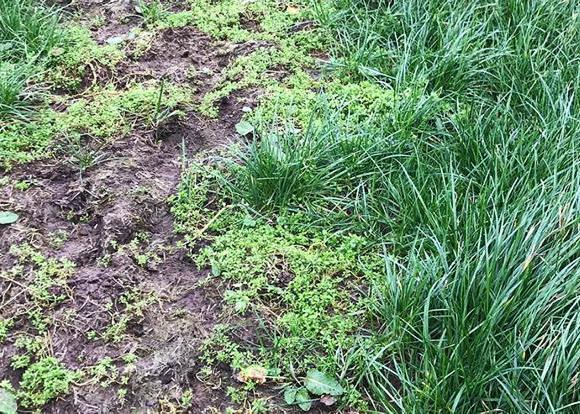
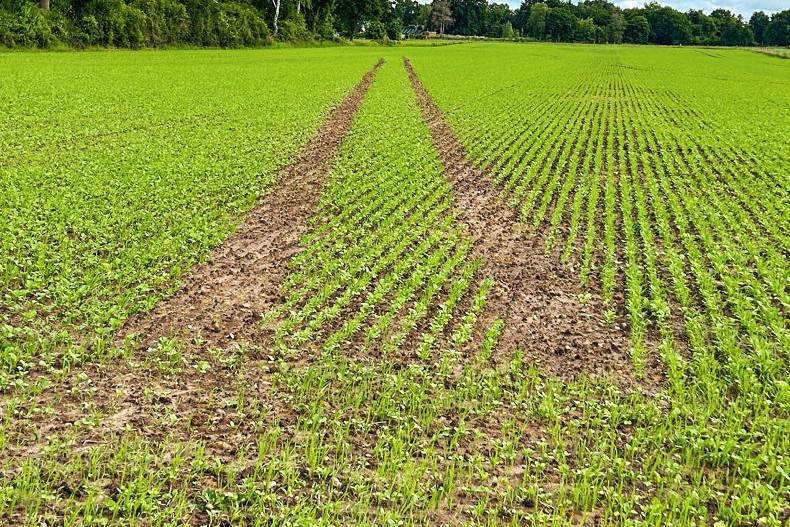
SHARING OPTIONS